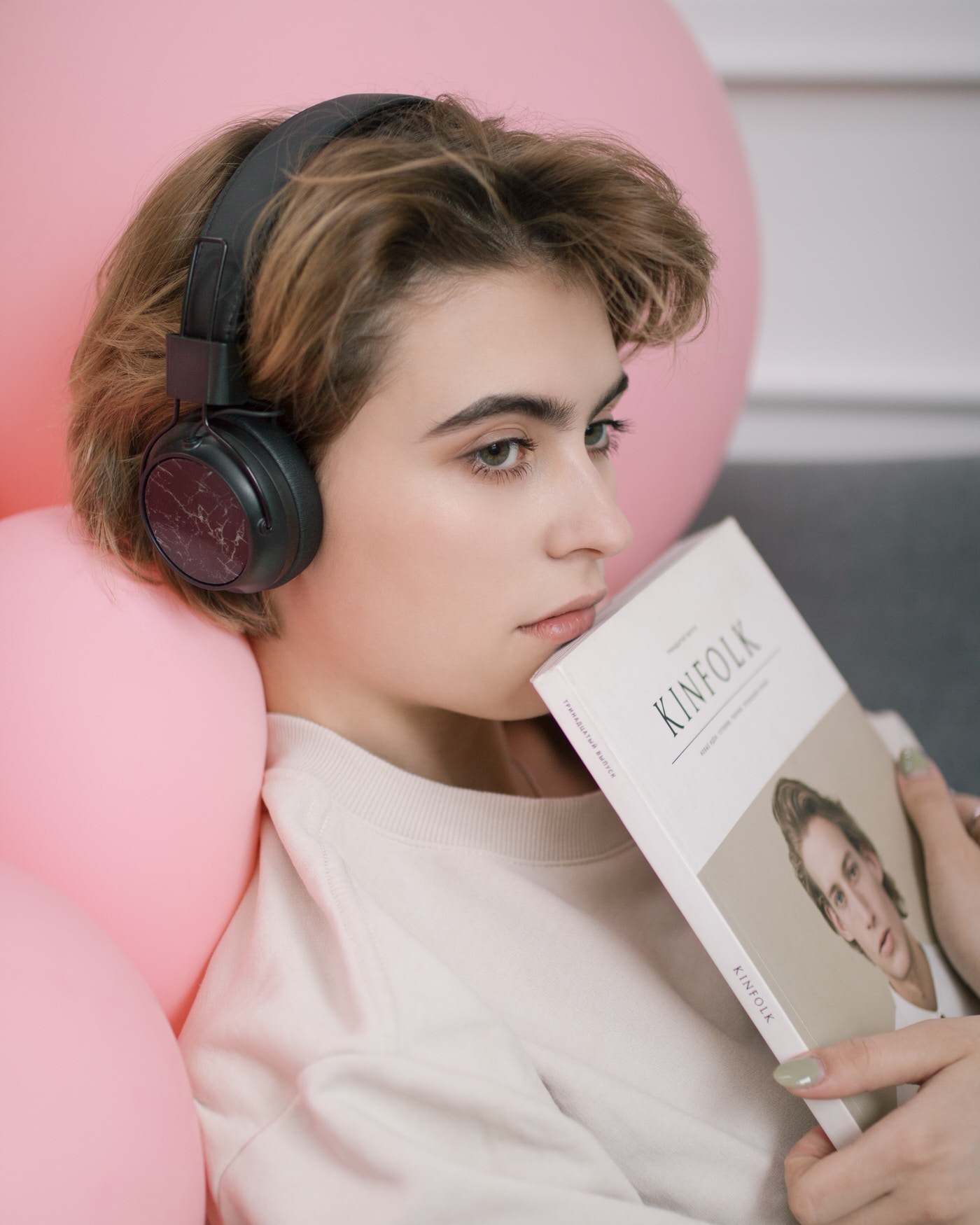“I want to show you something,” my husband said as he led me to a chair in front of his laptop. I sat and he put headphones on me. Pulled up on the screen was an hour-long YouTube video of a women silently, methodically going through her makeup bag. You could only see her forearms and hands, as she picked up each product gently and then began tapping, opening and closing, and sorting each thing in the container. I was confused (and a little weirded out) to say the least, but my husband would give me ZERO explanation. I decided to trust him and focused on settling into the experience. Suddenly, I felt a tingling sensation in my head and down my spine, as a feeling of sleepiness and calmness arose in me. I told my husband what I was feeling — and he excitedly told me about ASMR, a term I had never heard of.
Years later, I was at a coffee shop working when a friend noticed a YouTube video pulled up on my screen of a girl speaking closely into a specialized microphone shaped like the human ear. The entire video was a compilation of different whispered words. “What are you watching?” my friend asked, her brow raised with a mix of intrigue and concern. “It’s an ASMR video,” I said. “I listen to them instead of music when I work because they keep me calm and focused.”
The term “ASMR”, which stands for Autonomous Sensory Meridian Response, was only coined in 2010 after a few years of people online attempting to define a unique physical experience they were having when hearing, feeling, or watching certain things.
Essentially, ASMR is a group of positive sensations that are triggered by seen, heard, or felt stimuli.
It usually feels like physical tingling sensations beginning in the scalp and traveling to the spine and limbs, combined with an emotional feeling of well-being. If you’ve ever felt similar things while having your hair played with, you may know the sensations I’m describing!

There’s an entire community involved in the ASMR movement, featuring different ASMR artists who’ve dedicated their time to creating content that helps others experience the sensations and find a sense of relaxation and community. The ASMR community has uncovered many popular triggers, such as small methodical movements, tapping different objects, calming role-play scenarios (such as getting a haircut), or whispering certain words. Whether it’s in a visual or audio form, most triggers rely on methodical repetition and a calming (and sometimes comforting presence) from the ASMR artist.
When used well, ASMR could be a great tool for entrepreneurs, freelancers, and creatives to maintain both a calm work environment as well as a separate time for self-care and relaxation.
With its produced feelings of calmness, sleepiness, or even euphoria, there are several benefits to delving into ASMR such as decreasing anxiety and depression, assisting with insomnia, and offering a therapeutic experience during a stressful or lonely time.
If you’re new to ASMR, try introducing it to your routine in one of the following ways, to see if it affects you positively:
Listen to an ASMR video or podcast while you work.
If you work on a phone or laptop, trade in your tunes for ASMR as a calming alternative. While I tend to listen to whispering videos as I work at coffee shops, the speaking triggers may be distracting for some. Try a non-speaking option and see if it assists with your focus and keeps the productivity stresses at bay.

Use ASMR before bed or a nap.
Utilizing ASMR to wind down both mentally and physically is one of my favorite relaxation routines. This is best done with an auditory trigger rather than a visual one, so you’re not keeping yourself awake with the blue light of your screen. Choose a video (but darken the screen light) or podcast, put on headphones, and get into a comfortable position while focusing on the trigger sounds. If you’ve ever put on white noise or rain sounds to assist with sleep, this is a similar practice!
Add ASMR to your morning routine.
Whether you have a solidified morning routine or are just now trying to begin your days with intention, ASMR is a great way to quiet yourself before the day gets underway with tasks, notifications, and human interaction. Try watching an ASMR video or listening to a podcast right after you wake up — and don’t be intimidated to spend this time exploring different ASMR artists and triggers to see how you respond to different styles and stimuli.
ASMR can be experienced in a variety of ways. If you live near New York City, you can attend a Whisperlodge performance, which offers an in-person immersive ASMR experience. If you’re hoping for something a little less face-to-face, explore the ASMR category on Spotify or check out the variety of ASMR artists on YouTube. A few of my favorite channels are Gibi ASMR, Gentle Whispering ASMR, and ASMR Zeitgeist. If you’d like to learn more about the phenomenon, try visiting ASMR University online or listening to the ASMR University podcast.
While ASMR is becoming more known in mainstream society, I know it’s an unusual thing to get accustomed to. I want people to know that it can be a beautiful and useful tool! Unfortunately, ASMR sensations don’t occur in every person, and triggers don’t always release the same sensation in everyone. If it initially doesn’t work for you, don’t put pressure on yourself. Just focus on exploring whether or not this could benefit you and have fun leaning into the unusual nature of it.